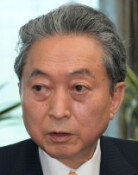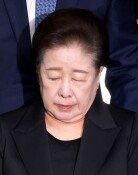[Opinion] A Faded-Colored Photo
The most touching part of Kang Je-gyus Taegukgi, the Korean movie that attracted the largest number of moviegoers, was the a 70-year-old mans line that he murmured before the remains of his elder brother who died fifty years ago. You promised me you would come back. I have waited for you so long Why are you lying here? I have waited for 50 years . Jin-tae, Jin-tae It was a great scene in which great actor Chang Min-hos skillful acting was outstanding. Ten million moviegoers cried watching that scene.
▷A few days ago, similar scenes took place at the site where remains of people killed during the Korean War in Gapyong, Gyeonggi were being excavated. It was so similar to the scene in the film that it made people feel as if they were watching the film. A 64-year-old woman said, crying before the remains of her elder brother who died 53 years ago when he was twenty, Have you been lying alone in the depths of a mountain? You adored me so much. The man in the portrait brought by his younger brothers resembled the man in the faded-colored photo so closely.
▷The man in the photo is Na Young-ok. Born in Beolgyo, Jeonnam, he was the second child among eight siblings, and people say that he was a famous prodigy in his hometown. He attended Suncheon Normal School and was studying for the higher civil service examination working as a scribe in a registry office of a law court when the Korean War began. At the outbreak of war, he joined the army as a student soldier in Busan. It was in 1951 when Nas family lost contact with him. His father, who had been ill in bed after being notified of Nas disappearance, passed away in 1957 and his mother, who had lived in the house in his hometown, is said to have stated in her will that do not sell this house because Young-ok may come back.
▷Now, 50 years after the end of the Korean War, 178,000 patriotic martyrs are buried in the National Memorial. However, for the 103,000 fallen soldiers whose remains have not been discovered, only memorial tablets are kept. Most of those who are still missing in action are buried somewhere in this country waiting for excavation. It is their descendants obligation to find their remains, no matter how difficult that may be. The faded-colored photo that came back with Nas remains teaches us that todays Republic of Korea has not been made without cost.
Editorial Writer Oh Myung-chul, oscar@donga.com







